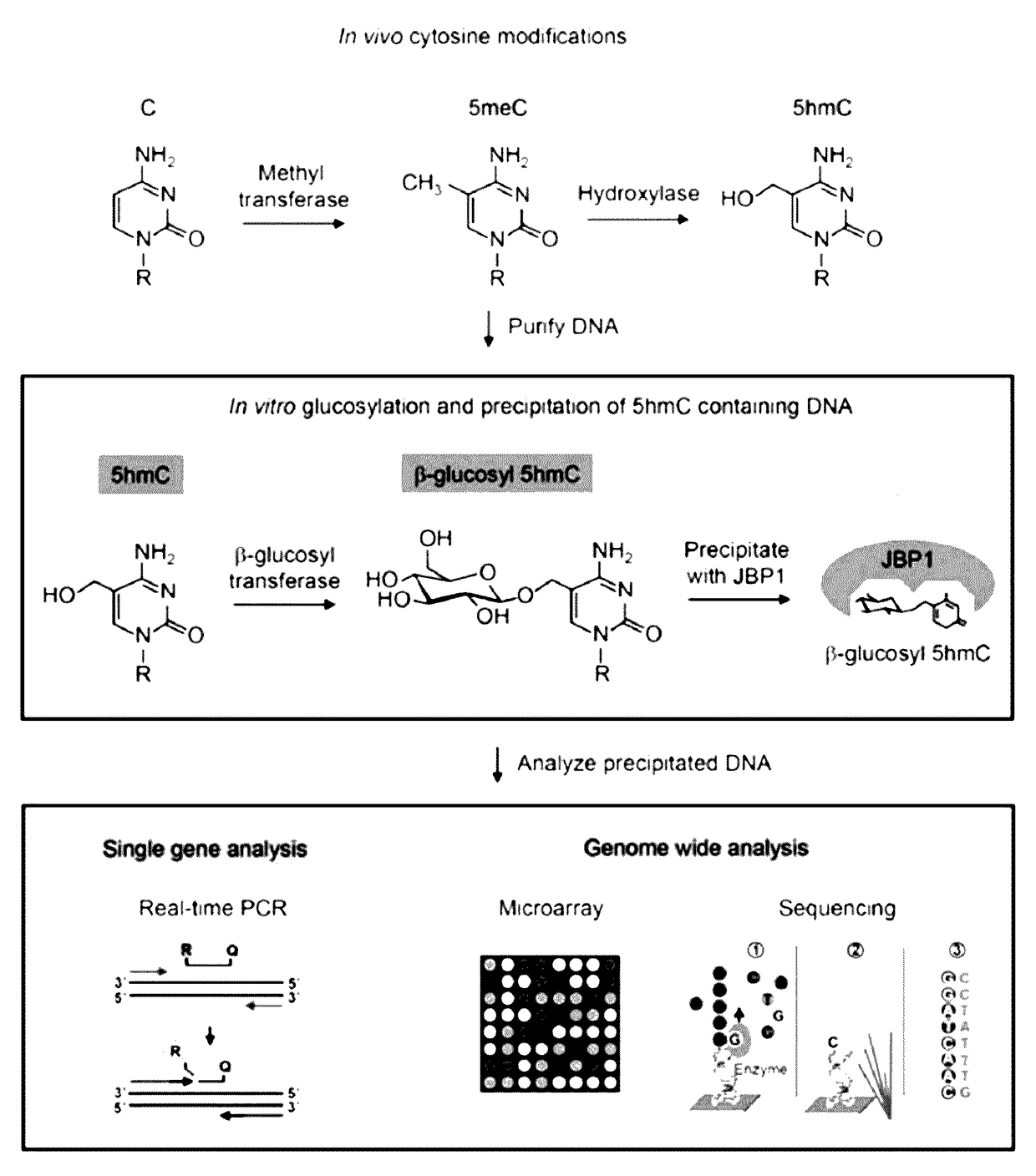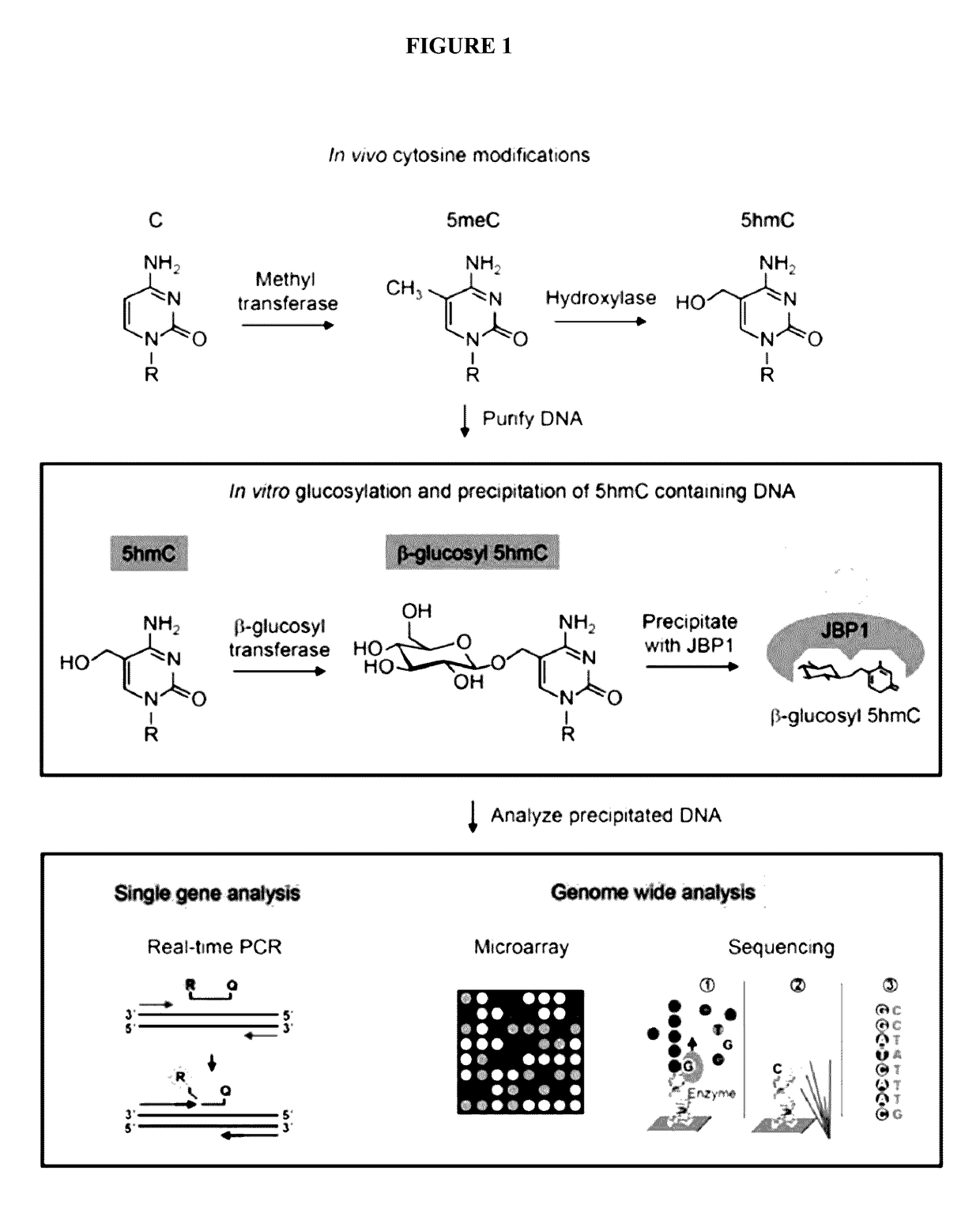Methods and kits for detection of 5-hydroxymethylcytosine
a technology of methylcytosine and kits, which is applied in the field of methods and kits for the detection of methylcytosine, can solve the problems of impracticality of the method for identifying the status of 5hmc of individual genes, the difficulty of identifying specific genomic regions containing 5hmc, and the inability of commercially available antibodies to raise 5hmc to distinguish between 5mec and 5hmc. achieve the effect of facilitating isolation
- Summary
- Abstract
- Description
- Claims
- Application Information
AI Technical Summary
Benefits of technology
Problems solved by technology
Method used
Image
Examples
example 1
Efficient and Selective Identification of 5-hydroxymethylcytosine in Genomic DNA
[0082]Materials and Methods
[0083]Protein Purifications
[0084]β-glucosyltransferase
[0085]The bgt gene was amplified from T4 bacteriophage DNA and was cloned into pET28a. Cultures of Rosetta(DE3)pLysS harboring pET28a-bgt were grown in 500 ml Studier auto-inducing media20 to an A600 of 0.6 at 37° C. followed by a shift to 18° C. for 20 hrs. The cells were harvested by centrifugation and suspended in 10 ml β-gt lysis buffer (500 mM NaCl, 25 mM Hepes KOH (pH 7.9), 5 mM imidazole, 10% (v / v) glycerol). All subsequent steps were carried out at 4° C. unless otherwise specified.
[0086]After suspension in lysis buffer, cells were incubated for 1 hr with lysozyme added to a final concentration of 200 ug / ml. After 1 hr Triton-X100 was added to the lysate to a final concentration of 0.1% (v / v) and the lysate was heated briefly to 20° C. The lysate viscosity was reduced by sonication on ice. The lysate was clarified by ...
PUM
| Property | Measurement | Unit |
|---|---|---|
| volume | aaaaa | aaaaa |
| pH | aaaaa | aaaaa |
| concentration | aaaaa | aaaaa |
Abstract
Description
Claims
Application Information
 Login to View More
Login to View More - R&D
- Intellectual Property
- Life Sciences
- Materials
- Tech Scout
- Unparalleled Data Quality
- Higher Quality Content
- 60% Fewer Hallucinations
Browse by: Latest US Patents, China's latest patents, Technical Efficacy Thesaurus, Application Domain, Technology Topic, Popular Technical Reports.
© 2025 PatSnap. All rights reserved.Legal|Privacy policy|Modern Slavery Act Transparency Statement|Sitemap|About US| Contact US: help@patsnap.com



